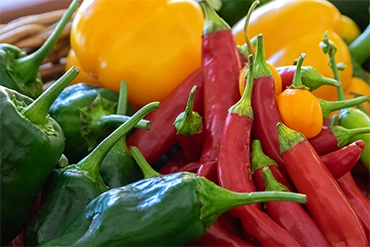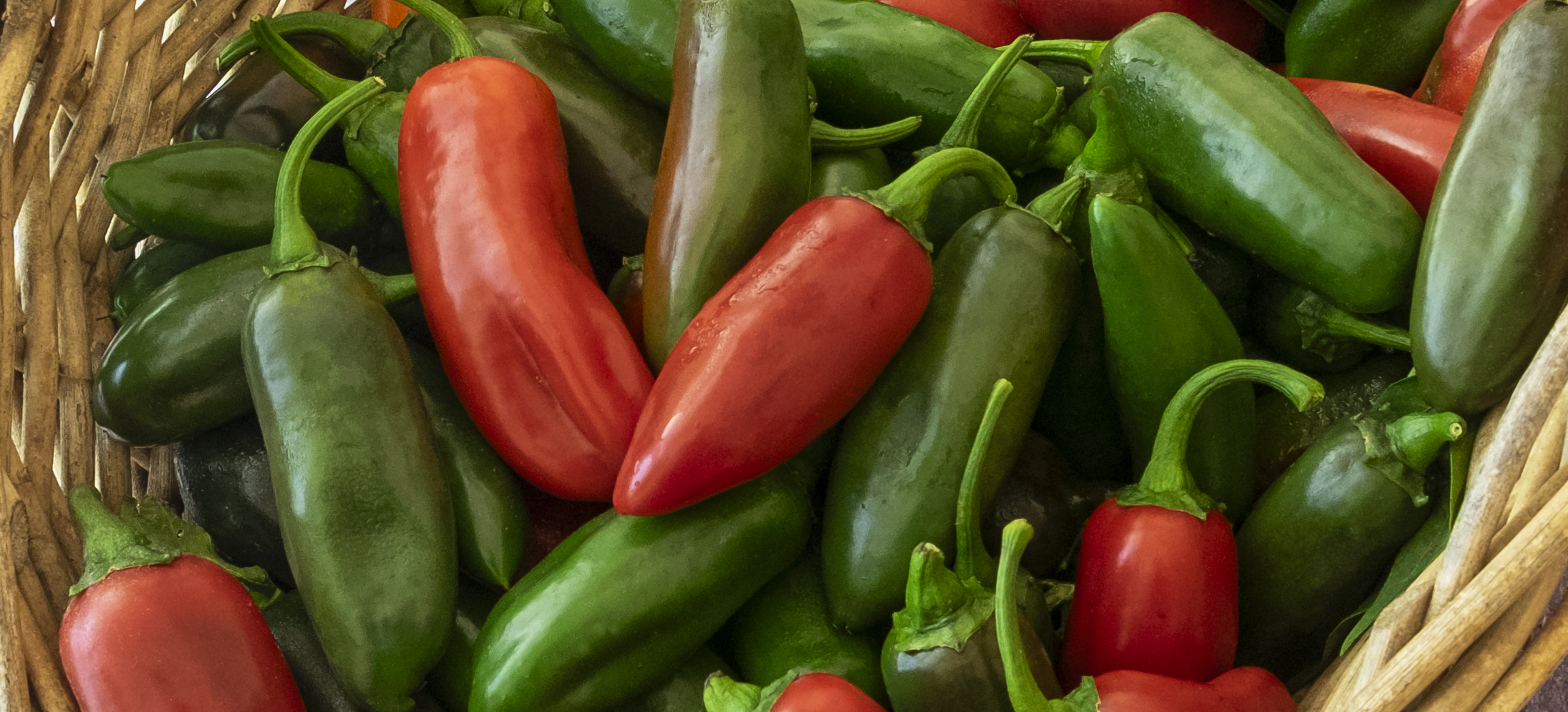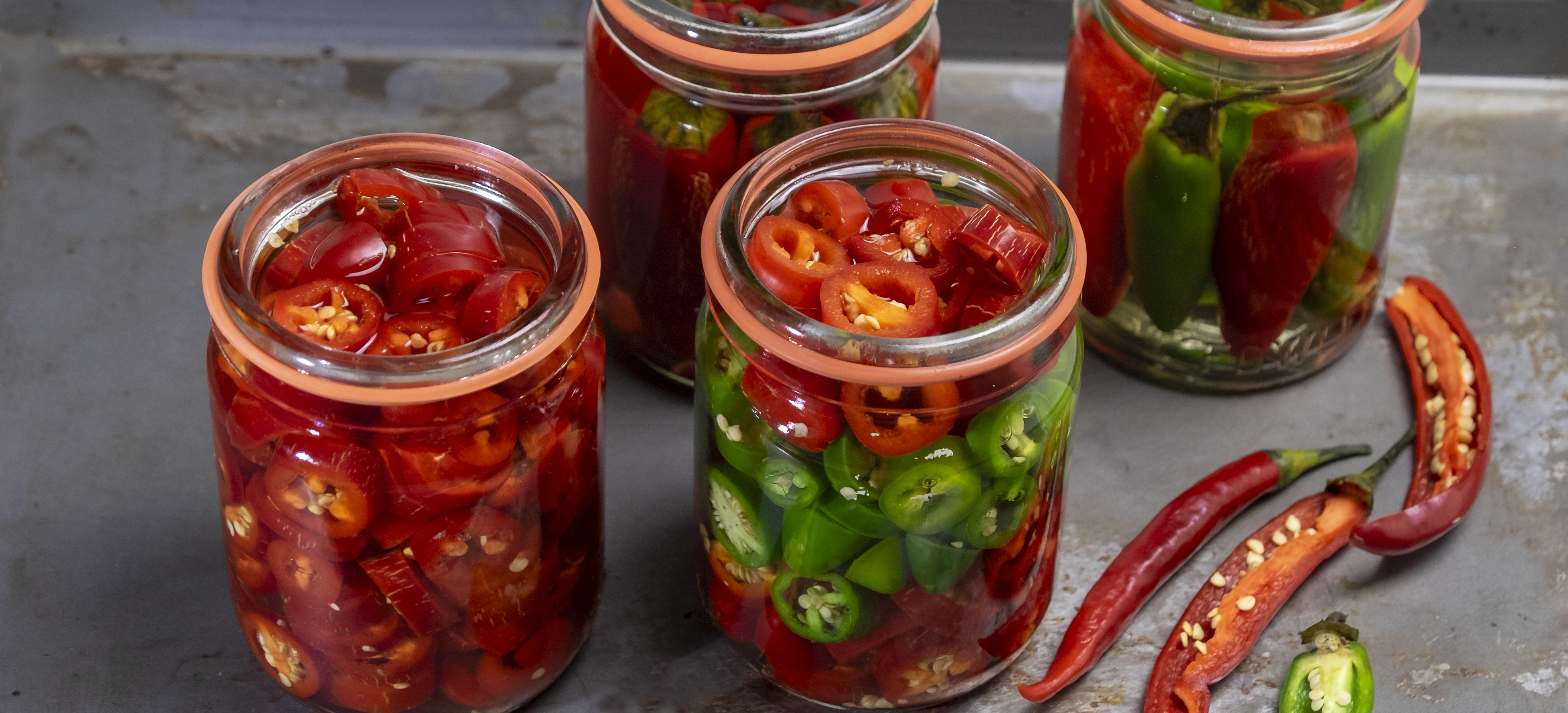
Some Like it Hot Hot Hot: The Scoville Factor
- Food Science
Regardless how you spell it, chile, chili or chili, the feisty fruit of the small shrub native to South America, with their spicy attitude have been adopted into the culinary souls of cultures all over the world. The Aztec’s cultivated a vast range of chilli peppers to use in their rituals and as an essential ingredient to spice their dishes and in their famed chocolate beverage. Reportedly first domesticated around 6000 years ago in Ecuador, initially they were traded across the Andes and America’s before being discovered by Christopher Columbus, the Spanish sponsored navigator and explorer, in the West Indies in the 15th century. Returning to Spain with them, Portuguese traders then took chilli to their colonies, Goa, India and onto Asian and African trading ports. From here they spread throughout the world as a cheaper alternative to the true black pepper (Piper nigrum), which only grows in the tropics whereas the chilli pepper grows across a broader geographic area.
Chilli use defines cuisines
The Ottoman Turks introduced chilli peppers to Hungary and by the mid-1800s paprika, dried ground chilli pepper was adopted as their national spice. Some cuisines, such as Korean, Sichuan Chinese, Southeast Asian, Indian, and Latin American are defined by their chilli use and are eaten at breakfast, lunch, and dinner while chilli sauce, chilli salsa and fresh and pickled jalapenos are a dining staple across the globe.
Chilli triggers the sweats, increases our metabolic rate and tricks our brain receptors and we love it
Displaying a vibrant range of colours from yellow, orange, red and green, bold forms from bonnet shapes to elegant icicles and with their renowned spiciness of varying degrees of heat, no wonder they are one of the most widely grown spices in the world. Chillis’ renowned heat comes from a family of 12 compounds called capsaicinoids. Capsaicin, the most potent, is concentrated predominately in the seeds, with some in the pithy tissues and smaller amounts in the fruit flesh. When consumed its unique chemical composition affects the body’s temperature regulation making us feel hotter than we are and induces cooling mechanisms such as, sweating, and increased blood flow to the skin. It also increases our metabolic rate to burn more energy and triggers brain signals that make us feel less hungry and more satisfied and it tricks our pain receptors into thinking they are burning. Capsaicin creates the spiciness and pungency to our foods.

The Scoville test succeeds and it's used internationally
The amount of capsaicin varies across the different chilli varieties and is further influenced by the growing conditions, geographic location, and the age of the fruit. Its heat, often also referred to as pungency, usually develops around 4 weeks and steadily increases with maturity and ripeness. With a such broad range of pungency, from mild to exceptionally hot, they have been easily incorporated into so many cuisines. To understand this diversity and to help predict the heat of a particular variety, Wilbur Scoville’s (Park-Davies Pharmaceuticals) set a mission to develop a test that could rate the pungency of chilli varieties. In 1912 he created the Scoville Organoleptic Test that could be applied to any variety.
His method extracted capsaicin oil from a particular chilli pepper and then repeatedly diluted it with sugar water. A panel of five taste-testers would try each dilution until the majority of them could no longer experience any heat. Once no heat was detected a score, expressed as a Scoville Heat Unit (SHU), was assigned based on the level of dilution. So, that meant that if a chilli was diluted to the point of no heat detection, say by a factor of 10,000, then it was rated at 10,000 SHU. The more dilutions it took to register no heat, the hotter the chili, the higher the score.

Now, of course this method does have some flaws. Principally it is a totally subjective measure by 5 taste-testers who undoubtedly have different heat-tolerance levels. Today, this method has been superseded using liquid chromatography, which can accurately identify the chemical concentration of capsaicin in any chilli and chilli based sauces tested. However, the concept of the Scoville Heat Unit lives on as the chromatography scores are generally converted into SHU’s. Even the American Spice Trade Association (ASTA), uses the Scoville Heat Scale by multiplying its chromatography score by 15.
Chilli pepper's pungency releases endorphins
Its biting sharpness burns the mouth, it can make us gasp, bring tears to our eyes and leave us searching for cooling relief but the chilli remains adored by many. Summer heat evokes the fiery attitude of the chilli pepper and feeds our addiction to the ‘feel-good” endorphins which are released in the brain as part of our body response to the pesky capsaicin compounds. Enjoy the chilli season addiction with some of my favourite chilli recipes: Dried Chilli, Sweet Chilli Sauce, Garlicky Chilli Paste, Kimchi Paste, Eggplant, Ginger & Chilli Chutney, Peach and Ginger Chutney, Kaffir Lime and Chilli Jelly, and Mango Chutney.
Most commercially available chilies have been tested and chilli aficiados are always keen to boast the SHU of their favourite.

